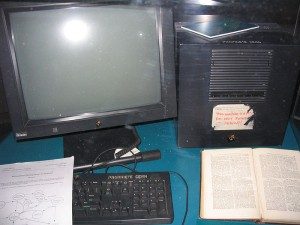Today I found out what the first website ever made was. Simply put, it was a website made by the World Wide Web’s creator Tim Berners-Lee, who was working for CERN (European Organization for Nuclear Research).
The first ever website was published on August 6, 1991 and served up a page explaining the World Wide Web project and giving information on how users could setup a web server and how to create their own websites and web pages, as well as how they could search the web for information. The URL for the first ever web page put up on the first ever website was http://info.cern.ch/hypertext/WWW/TheProject.html
The first ever web browser, called WorldWideWeb, was also created by Tim Berners-Lee. This browser had a nice graphical user interface; allowed for multiple fonts and font sizes; allowed for downloading and displaying images, sounds, animations, movies, etc.; and had the ability to let users edit the web pages being viewed in order to promote collaboration of information. However, this browser only ran on NeXT Step’s OS, which most people didn’t have because of the high cost of these systems.
In order to provide a browser anyone could use, the next browser he developed was much simpler and, thus, versions of it could be quickly developed to be able to run on just about any computer, pretty much regardless of processing power or operating system. It was a bare-bones inline browser (command line / text only), which didn’t have most of the features of his original browser, but at least could be used on pretty much any computer out there at the time and allowed people to access the information on the web.
The first web server was also written by Tim Berners-Lee called CERN HTTPd, the latter part standing for “Hypertext Transfer Protocol daemon”. For those not familiar, a daemon is simply a program that more or less runs in the background on a system doing whatever it is programmed to do; in this case, listening for and responding to requests for web pages that exist on the machine it is running on; thus this daemon would be called a “server”.



